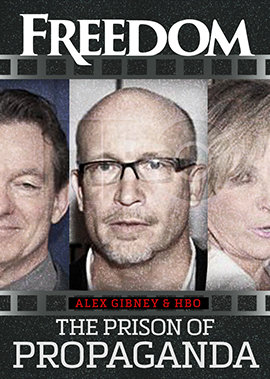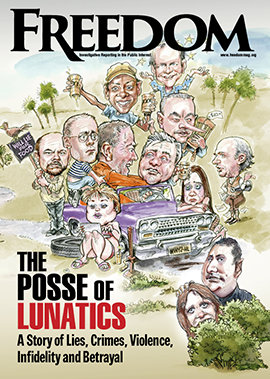And that sentiment has only become stronger over time.
Less than a generation ago, reading a newspaper, you couldn’t tell what a journalist thought about the subject matter of his story. That’s because he told that story neutrally.
Those days are gone and I don’t think they’re coming back.
Journalism’s purpose is to speak truth to power and act as a sanitizing agent against the corruption that tends to flourish in the dark.
It was once such an important check on corruption that journalism was dubbed the “fourth branch,” balancing the power of the executive, legislative and judicial arms of government. Like the other three, it once relied on a consistent set of rules to ensure fairness. One standard in particular built the credibility of the profession: objectivity.
Two people reading the same piece of objective journalism could come to entirely different conclusions about it. That’s the whole point. A writer upholding objectivity tells factual stories neutrally in order to inform readers so they can come to their own conclusions.
But in recent years, a new generation of writers has discarded any pretense of objectivity, telling audiences not just what happened, but what to think about it.
Much has been lost in the process.
In a world where journalistic objectivity is discarded, no one has any idea how to find out the truth about issues that matter.
The earliest inclination toward this occurred around the Vietnam War, when certain journalists began to question whether they needed to remain objective in the face of what they believed was an obviously immoral conflict.
Like a slippery slope, once that door was opened, reporters continued to find more explanations and excuses for framing their objectivity as relative to whatever beliefs they happened to hold. Where journalists once followed the lead of the public, they gradually moved themselves to the head of the pack and began telling the public what to protest and why, rather than letting citizens—on the basis of the facts they learned from actual reporting—decide for themselves.
Finally, over the last decade, the entire notion of objectivity in journalism has become relative, as reporters embraced a redefining of that absolute term (“objectivity”) to accommodate their view that sometimes they know what’s best for us after all.
As George Orwell said in Animal Farm, “All animals are equal, but some animals are more equal than others.”
Witness a 2023 Washington Post opinion piece entitled “Newsrooms that move beyond ‘objectivity’ can build trust.” The title speaks for itself. Beyond that, the author quotes New York Times executive editor Joseph Kahn, saying: “When the evidence is there, we should not default to some mealy-mouthed, so-called neutral language that ‘some people see this as a falsehood, while others do not.’ When the evidence is there, we should be clear and direct with our audience that we don’t think there are multiple sides to this question.”

But who gets to evaluate that evidence and be the arbiter of what’s true and what’s false? And how do you measure the difference between a math problem that has an objective answer and a social question that absolutely does not? The truth is that the neutral language Kahn rejects as “mealy-mouthed” is a valuable check to prevent the powerful-in-voice from abusing that privilege.
The rise of digital publishing in recent years has only exacerbated the abandonment of objectivity by creating an instant feedback loop based on popularity. As attention spans shorten, writers are judged by their talent at generating “clicks,” rather than their ability to tell important stories fairly. A new hyperbole has therefore arisen—the task at hand is now to stir emotion, to entertain rather than inform. Nuanced and skilled reporting is less “sticky” than salacious writing supporting readers’ existing biases. The result has been the shattering of media publications into tiny slices targeted at their own agreeable audiences.
But in a world where journalistic objectivity is discarded, no one has any idea how to find out the truth about issues that matter. Two publications covering the same event produce two entirely different stories, each pitched as factual and each selectively edited with cherry-picked facts delivered in the voice of advocacy rather than reason.
It’s why faith in the fourth branch has never been lower: According to Gallup, a record-high 39 percent of Americans have no trust at all in media to report the news fully, fairly and accurately. In 1976, only 4 percent of Americans harbored that level of distrust. That collapse parallels a similar collapse in the public’s trust in government overall. When taken in combination, it’s easy to account for the rise in the sharing of conspiracy theories and other content that was once confined to small numbers on the social fringe.
Which brings us to the most important question of all: In a world marked by complexity and aggression, where can an average citizen go to understand the issues and form their own views? If media exists solely to maximize profits by catering to preexisting biases and prejudices, what and where is the voice of truth? If “reporters” routinely take sides in every matter of public debate, how does the public ever move past conflict toward consensus?
The solution is less complex than it appears: we need a reversion to the basic principles of journalism, with reporting grounded in facts, provided with detail and free of shading.
Rebuilding trust in American life isn’t rocket science. It starts with one simple—but underrated—idea: integrity matters.






















